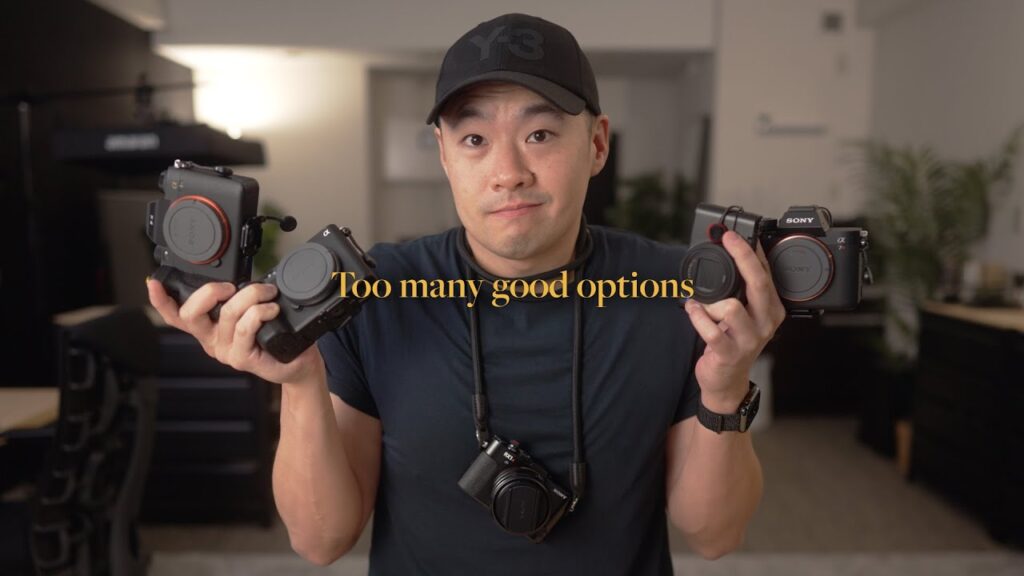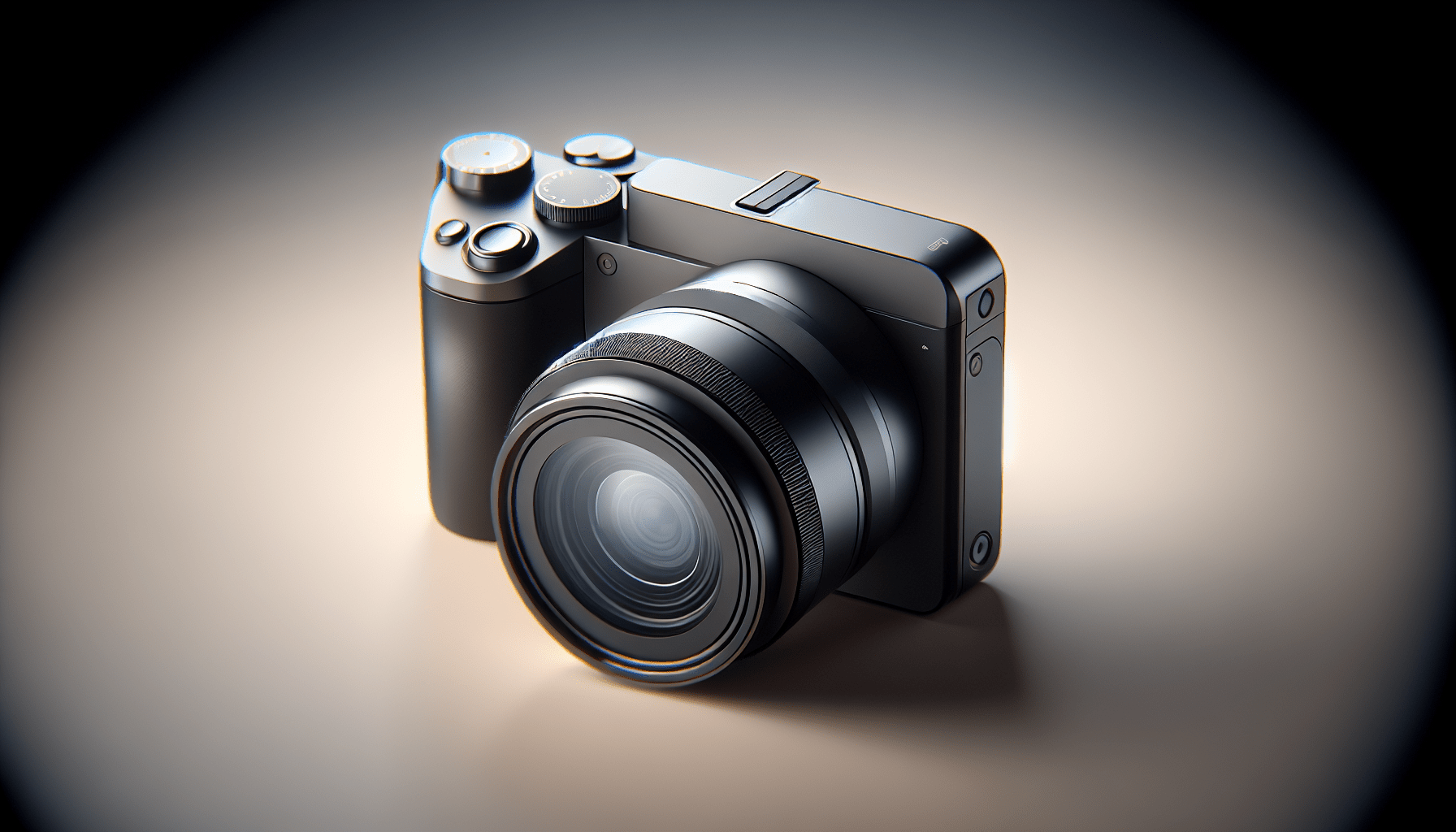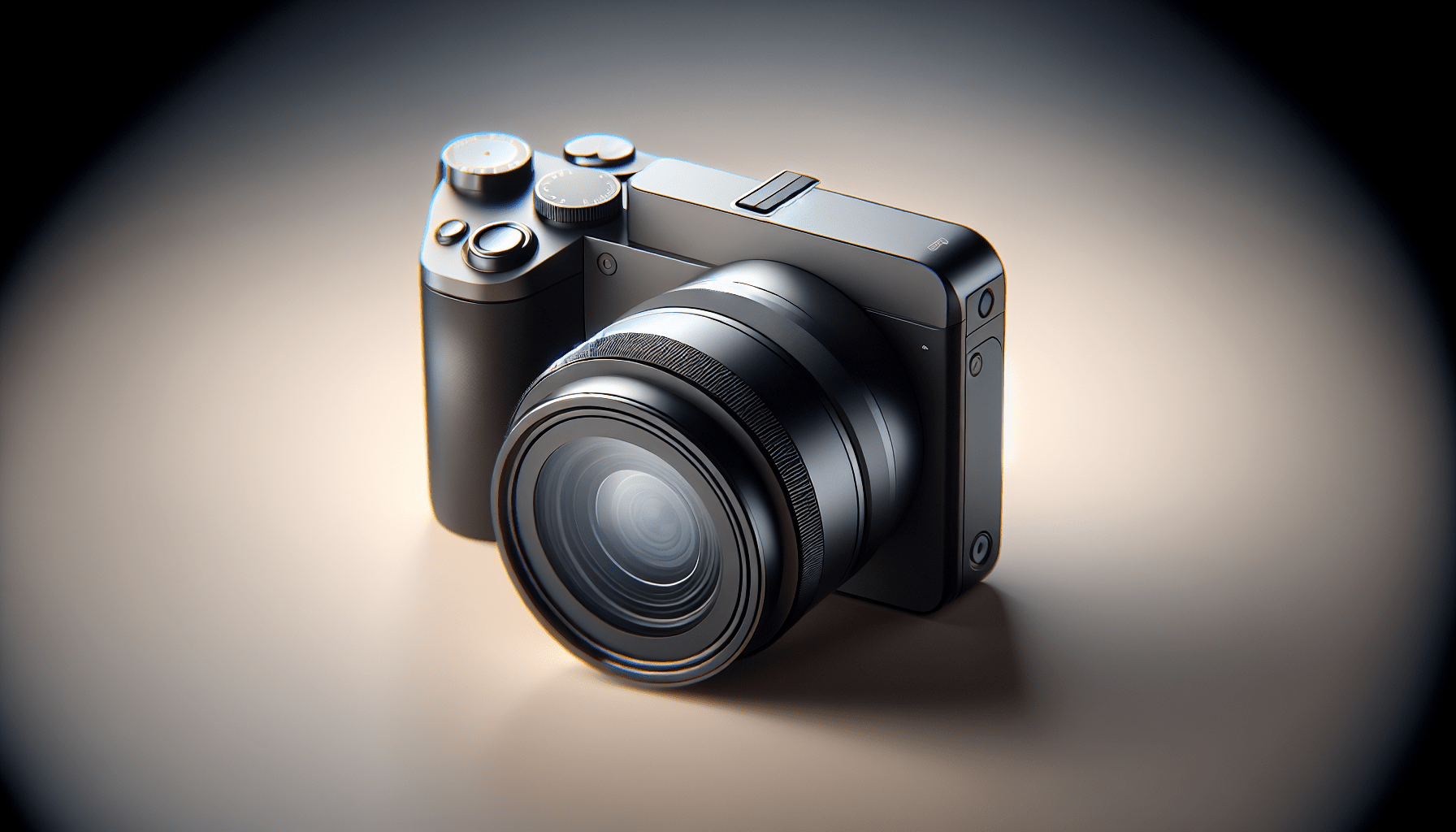You’re ready to explore the world of photography or videography, and choosing your first camera can feel daunting with so many options available. This guide is all about helping you navigate through the multitude of choices to find the best beginner camera in 2023.
Together, we’ll look at the top camera brands, key factors to consider, and even some alternatives that might suit your needs better. By the end, you’ll have a clear understanding of what to look for to make a well-informed decision, whether you’re capturing stills or shooting videos.
The Best Beginner Camera 2023 — How To Choose by Pat Kay
Understanding Your Needs
Choosing the right camera can seem like a daunting task, given the myriad of options available in 2023. To make an informed decision, it’s essential to first understand your needs and how you plan to use your new camera.
Defining Your Photography Goals
Start by asking yourself what you want to achieve with your photography or videography. Are you looking to capture precious family moments, document your travels, or perhaps even start a photography business? Defining your goals helps narrow down the types of features and capabilities you need in a camera. Maybe you’re drawn to street photography, like Pat Kay was, or perhaps you’re inclined towards landscape, portrait, or sports photography. Your objectives will heavily influence the type of camera that suits you best.
Types of Photography and Videography
Different genres come with their unique requirements. Street and travel photographers often need a portable, lightweight setup, whereas landscape photographers might prioritize image quality and lens options. Videographers may seek robust video features like 4K resolution and good stabilization. Understanding the specific demands of your preferred genre simplifies your selection process.
Frequency and Environment of Use
How often and where you’ll be using your camera also plays a critical role. If you’re planning to shoot frequently and in various environments, you might need a durable camera with good battery life and weather sealing. Conversely, if your shooting will be sporadic, a simpler, more affordable option might suffice.
Key Factors for Choosing a Beginner Camera
As you narrow down your options, consider these key factors to ensure you pick a camera that matches your needs.
Budget Considerations
When starting out, spending wisely is crucial. Most beginner and mid-range cameras fall under the $1000 mark. Affordable options like the Sony ZV-1F or Sony A6400 offer great value without breaking the bank. Remember, expensive gear doesn’t make you a better photographer; practice and creativity do.
Importance of Sensor Size
Sensor size affects image quality, depth of field, and low-light performance. Full-frame sensors, typically found in higher-end models, excel in these areas but come at a higher cost. APS-C sensors offer a good balance between quality and affordability, making them a popular choice for beginners.
Image Quality Metrics
When evaluating image quality, consider resolution (measured in megapixels) and dynamic range. While megapixels are often emphasized, a sensor’s ability to capture detail in shadows and highlights (dynamic range) is equally important. Also, consider the color reproduction and sharpness that the camera can deliver.
Video Capabilities
If videography is part of your plan, examine a camera’s video specs closely. Look for features like 4K recording, frame rates for slow-motion footage, and microphone inputs for better audio quality. Cameras with good in-body stabilization are beneficial for handheld shooting.
Weight and Build Quality
A camera’s weight and build quality affect its portability and durability. Lightweight cameras are easier to carry around, which is advantageous for travel and street photography. However, more robust, heavier cameras might offer better protection from the elements and better overall handling.

This image is property of i.ytimg.com.
Exploring Camera Types
Here’s a breakdown of the different types of cameras you can consider for a start.
Compact Cameras
Compact cameras are a great starting point due to their simplicity and portability. They come with fixed lenses and are perfect for casual shooting. Examples include the Sony RX100 series, known for its excellent image quality packed in a small body.
DSLR Cameras
DSLRs have been the go-to for many for years, offering great image quality, optical viewfinders, and a wide range of lenses. Models like the Canon Rebel series (EOS series) are budget-friendly and offer room to grow as your skills improve.
Mirrorless Cameras
Mirrorless cameras are the latest trend, offering similar image quality to DSLRs in more compact bodies. They provide the benefit of electronic viewfinders and quicker, quieter shooting. The Sony A6000 series and Fujifilm X-T200 are excellent choices for beginners.
Bridge Cameras
Bridge cameras sit between compact cameras and DSLRs, offering more advanced features and the flexibility of manual controls without the need to change lenses. Examples include the Panasonic Lumix FZ1000 which provides a versatile zoom range and good video capabilities.
Action Cameras
For those into adventure and sports, action cameras like the GoPro Hero series are ideal. They’re small, rugged, and capable of shooting high-quality footage in extreme conditions, making them perfect for capturing fast-paced activities.
Popular Camera Brands and Their Beginner Options
Various brands offer excellent beginner cameras, each with its own strengths.
Canon
Canon’s Rebel series (like the EOS Rebel T7) provides a solid foundation for beginners with user-friendly features and a vast array of lenses. The EOS M50 is a great mirrorless option for those wanting a more modern system.
Nikon
Nikon offers comparable options in its DSLR lineup with models like the Nikon D3500, known for its great ergonomics and simplicity. For mirrorless, the Nikon Z50 is a fantastic entry point into Nikon’s Z-mount system.
Sony
Sony is a frontrunner in mirrorless technology. The Sony A6000 series, particularly the A6100 and A6400, offer excellent autofocus and image quality. For those inclined towards vlogging, the Sony ZV-1 is a popular choice.
Fujifilm
Fujifilm is renowned for its stylish design and outstanding image quality. The Fujifilm X-T200 offers a great mix of usability and quality for beginners. Moreover, the X-A7 is another excellent option with intuitive controls and beautiful color science.
Panasonic
Panasonic is a strong contender, especially for videographers. The Lumix G7 provides excellent 4K video capabilities on a budget, while the Lumix GX85 offers great features in a compact form.

New vs. Secondhand Cameras
Deciding whether to buy new or secondhand has its own set of advantages and disadvantages.
Pros and Cons of New Cameras
New cameras come with the latest features, warranty, and peace of mind that no parts are worn or damaged. However, they tend to be more expensive than secondhand options.
Value in Secondhand Market
The secondhand market offers excellent value, allowing you to get higher-end models at reduced prices. Many cameras and lenses hold up well over time, making them a viable option for beginners on a budget.
Where to Buy Secondhand Cameras
Reliable places to buy secondhand cameras include reputable camera stores, online marketplaces like eBay, and dedicated camera forums. Some stores even offer warranties on used gear, adding an extra layer of security.
Things to Check Before Buying Secondhand
Caution is necessary when buying secondhand. Check for shutter count (number of photos taken), condition of the sensor and lens, functionality of buttons and dials, and overall wear and tear. Always ask for a return policy if possible.
Technical Specifications to Watch
Understanding key technical specs helps you make an informed decision.
Resolution and Megapixels
Higher megapixels offer more detail but aren’t everything. A balance between resolution and other factors like sensor size and image processing is crucial for overall image quality.
ISO Range
ISO determines the camera’s performance in low light. A higher ISO range allows shooting in dimmer conditions with less noise. Look for cameras that offer good noise performance at high ISO levels.
Autofocus System
A good autofocus system is key for capturing sharp images, especially in fast-moving situations. Pay attention to the number of focus points and the camera’s ability to track subjects.
Battery Life
Battery life varies significantly between models. DSLRs typically offer better battery life than mirrorless cameras. Consider your shooting conditions; carrying extra batteries might be necessary for longer shoots.
Connectivity Options
Modern cameras often come with Wi-Fi, Bluetooth, and NFC capabilities for easy file transfer and remote control. These features offer convenience and enhance the overall user experience.
Additional Features and Accessories
Consider additional features that can add value to your photography experience.
Lens Compatibility
Interchangeable lens systems allow you to expand your creative possibilities. Make sure the camera you choose has a good selection of lenses that meet your needs and budget.
Stabilization Features
In-body stabilization helps reduce blur caused by camera shake, vital for handheld shooting and in low light situations. Cameras like the Olympus OM-D series excel in this area.
Articulating Touchscreens
An articulating touchscreen offers flexibility in composing shots from different angles, which is particularly useful for vlogging, macro photography, and video work.
Weather Sealing
Weather-sealed cameras can handle harsh environmental conditions, making them ideal for outdoor and travel photographers who don’t want to be limited by weather.
External Microphone Support
For videographers, external microphone support is crucial for capturing high-quality audio. Check if the camera has a microphone input and consider what additional audio accessories you might need.
Learning Resources and Community Support
Starting photography or videography is a journey, and having resources and a supportive community can significantly aid your progress.
Beginner’s Guide Series
Numerous beginner guide series, including those by Pat Kay, offer a structured approach to learning. These can cover everything from basic camera settings to more advanced techniques.
Online Forums and Communities
Participating in online forums and communities like those on Reddit, or even dedicated Discord channels, provide a wealth of knowledge and support. Engaging with other beginners and experts helps improve your skills and get advice tailored to your specific needs.
Workshops and Courses
Attending workshops and online courses can accelerate your learning. They offer hands-on experience and direct interaction with instructors, which can be invaluable for beginners.
Social Media Channels
Following photographers and videographers on social media platforms like Instagram and YouTube can provide daily inspiration and tips. Many professionals share behind-the-scenes content that can offer insights into their workflow and techniques.
Tips for Making the Final Decision
Making the final choice involves a few additional steps to ensure you’re completely satisfied with your purchase.
Reading Reviews and Comparisons
Reading expert and user reviews can provide insights into a camera’s real-world performance. Comparisons between models help highlight the strengths and weaknesses of each option.
Handling the Camera in Stores
If possible, handle the camera in a store to get a feel for its ergonomics, weight, and interface. Personal comfort and ease of use are important factors that specs alone can’t convey.
Renting Before Buying
Renting a camera before making a purchase allows you to test it in your usual shooting conditions. This can help you decide if it truly meets your needs and expectations.
Thinking About Future Growth
Consider your future growth in photography or videography. Select a camera that not only meets your current needs but will also support your development as your skills improve. This might mean opting for a slightly more advanced model with features you can grow into.
Conclusion
Summarizing Key Points
Choosing the best beginner camera in 2023 involves understanding your personal goals, considering key factors like budget, sensor size, image quality, and assessing different camera types and brands. Whether you choose new or secondhand, it’s crucial to check technical specifications and additional features to find the perfect match.
Encouragement for New Photographers and Videographers
Starting your journey in photography or videography is exciting and filled with opportunities for creativity and growth. Remember, the best camera is one that feels right for you and inspires you to create.
How to Stay Updated with Latest Trends and Models
Stay updated with the latest trends by following industry news, subscribing to photography channels, and participating in community groups. Technology evolves rapidly, and keeping informed ensures you can make the best choices as you progress in your creative journey.
Embark on your photography or videography adventure with confidence. By considering your needs and doing thorough research, you’ll find the perfect beginner camera that sets you on the path to capturing stunning images and videos. Happy shooting!

